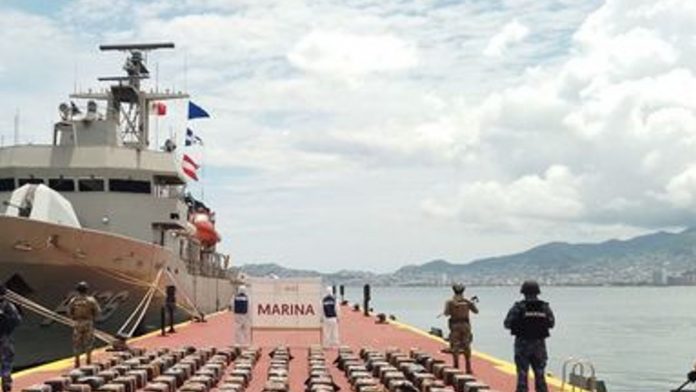They’re nicknamed “narco subs” — and the Mexican navy just sunk their hopes of distributing drugs in the United States. Mexico’s Security Secretary, Omar García Harfuch, posted on social media on Friday, June 27 that the navy seized the sub off the coast of Guerrero.
According to the Navy, the submarine was carrying over 3.5 tons of cocaine. García Harfuch said the seizure totaled the equivalent of $43 million. Three foreign nationals were also taken into custody. This takes the total seizures by Mexican President Claudia Sheinbaum’s administration to 44.8 tons of cocaine.
Sheinbaum took office in October 2024. United States President Donald Trump offered at the beginning of his second term to send troops to Mexico to help them stop drug trafficking. Sheinbaum declined the offer.
Mexican authorities posted video of Friday’s seizure, as well as pictures of the drugs on their social media account.
Massive recent methamphetamine bust
Mexican authorities also recently made a massive seizure on land. CBS News reported nearly 42 tons of methamphetamine worth more than $50 million were discovered during raids on illegal drug labs.
What is a ‘narco sub’?
Most narco subs intercepted by law enforcement are not true submarines and cannot dive beneath the surface, according to the think tank Insight Crime. Instead, these vessels, known as low-profile vessels or LPVs, ride just above the waterline, making them difficult to detect.
Typically about 15 meters long, LPVs are built with a narrow, elongated shape and powered by diesel or gasoline engines. They are primarily constructed from wood and fiberglass — materials that reduce visibility to radar.
Only the cockpit and exhaust tubes protrude above the water, while the rest of the vessel remains submerged. The stealthy design allows drug traffickers to move large quantities of narcotics while avoiding detection by patrols and surveillance systems.
The website reported that the narco subs require less skill to construct and operate compared to the fully submersible craft. It also means they run a greater risk of being spotted, since they skim across the surface of the water.

